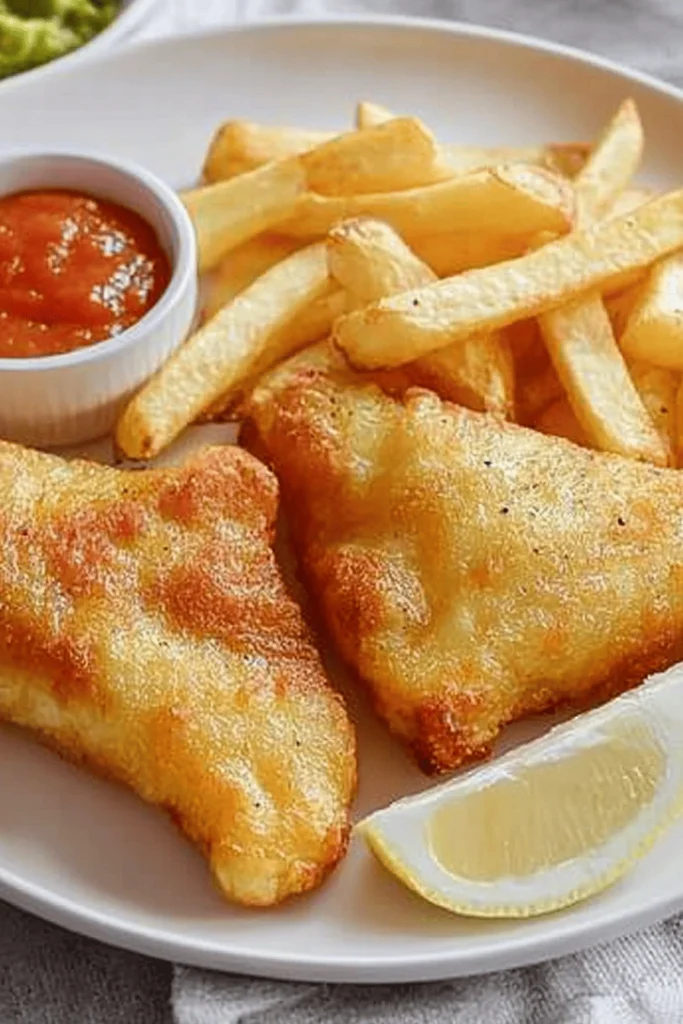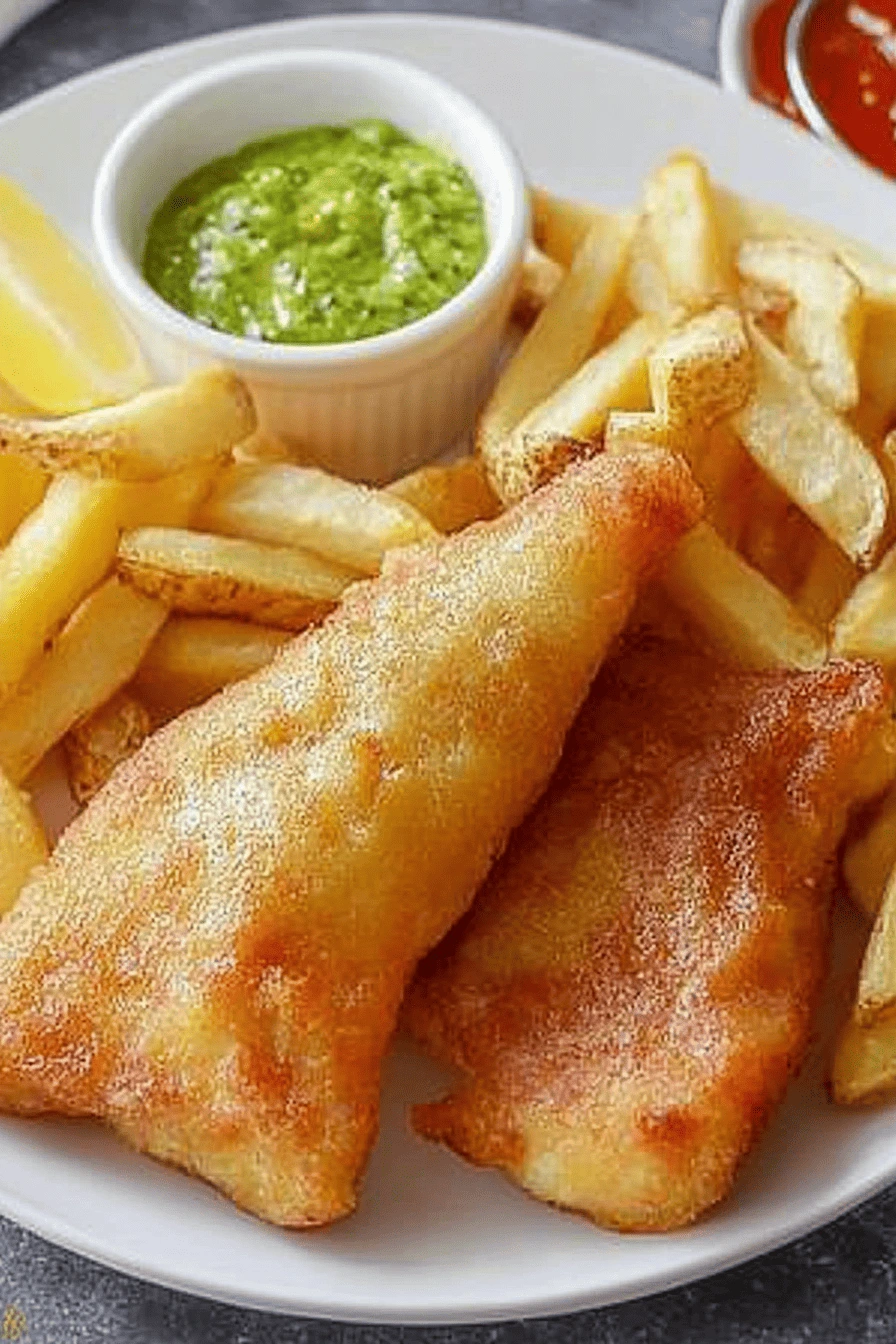I remember when my stomach issues made me question my favorite food, fish and chips. They always made me feel bloated. Then, I found lectin-free fish and chips, a healthier version that changed everything.
Looking for a tasty, lectin free fish and chips recipe? You’re in the right spot. About 20% of people have digestive problems from lectins. But this recipe is both delicious and gentle on your body.
White fish like cod and haddock are great for this dish. They have 20-30 grams of protein per 100 grams and are low in lectins. We’ll show you how to make a crispy, tasty meal that’s good for you.
Unlike regular fish and chips with up to 800 calories, our version has 500 to 700 calories. It shows that healthy food can also be indulgent. Get ready to transform your favorite dish into a healthier, tastier version.
Table of Contents
Understanding Lectins and Their Impact on Health
Lectins are tiny proteins in many plant-based foods that can affect your health. They help plants defend themselves but can cause digestive issues for some. Knowing about lectins is key to making anti-inflammatory diet recipes and low-lectin fried foods that boost wellness.
What are Lectins and Their Potential Risks
Lectins can be troublemakers in your body. They might:
- Interfere with nutrient absorption
- Trigger inflammatory responses
- Cause digestive discomfort
- Potentially disrupt metabolic processes
The Science of Lectins and Digestion
Your body has a hard time breaking down lectins. These proteins can stick to carbs, making it hard for your body to absorb nutrients. This can lead to gut inflammation.
| Lectin Source | Potential Health Impact |
|---|---|
| Legumes | Digestive irritation |
| Grains | Nutrient absorption interference |
| Nightshade Vegetables | Inflammatory responses |
Common Lectin Sources in Traditional Diets
Many foods we eat have lectins. Some main sources are:
- Beans and lentils
- Whole grains
- Tomatoes
- Peppers
- Eggplants

By learning about lectins, you can choose better foods. This can enhance digestion and lessen inflammation.
Benefits of Choosing a Lectin-Free Diet
Switching to a lectin-free diet can bring big health wins. Enjoying nutritious battered fish made without lectins is a tasty way to get healthier. It’s a step beyond usual cooking.
Choosing a lectin-free diet offers many health perks:
- Improved digestion
- Less body inflammation
- Better nutrient absorption
- Possible relief from autoimmune issues
Your fried dishes can fight inflammation and boost your health. Studies show cutting down on lectins can lower chronic inflammation. This is good for many health problems.
Some key benefits are:
- Gut Health Improvement: Getting rid of lectins can ease digestive troubles
- Energy Level Boost: Many feel more energetic without lectins
- Potential Immune System Support: It might help your immune system work better
While results vary, many see big improvements in health. A lectin-free diet can help manage health issues and boost overall well-being.
Essential Ingredients for Lectin Free Fish and Chips Recipe
Making tasty gluten-free fish and chips needs the right ingredients. You want to pick items that are good for you and taste great. It’s all about finding ingredients that are free from lectins but still have that classic flavor and texture.
Best Fish Options for the Recipe
Choosing the right fish is key for grain-free fish and chips. Cod is a top pick because it has:
- Mild, delicate flavor
- Flaky texture
- Zero lectin content
- High protein and omega-3 fatty acids
Lectin-Free Flour Alternatives
Wheat flour has a lot of lectins, so you need to find other options. Our top choice for lectin-free flour is a blend that includes:
| Flour Type | Benefits | Quantity |
|---|---|---|
| Almond Flour | Low-carb, high protein | 1 cup |
| Coconut Flour | High fiber, gluten-free | 1 cup |
| Cassava Flour | Grain-free, neutral taste | 1/2 cup |
Healthy Oil Choices for Frying
Choosing the right oil is key for both taste and health in your gluten-free fish and chips. Here are some good options:
- Avocado Oil: High smoke point, monounsaturated fats
- Coconut Oil: Stable at high temperatures
- Olive Oil: Rich in antioxidants
Using these components, you can create a delightful and nutritious lectin-free fish and chips meal. It’s a great choice for those looking for a healthier fried food option.
Kitchen Tools and Equipment Needed
You need the right kitchen tools to make a great plant-based fish fry. Start your lectin-free cooking journey with the right equipment for a tasty, crispy meal.
- Large mixing bowl for creating a batter
- Digital kitchen scale for precise measurements
- Heavy-bottomed pot or deep fryer
- Instant-read digital thermometer
- Wire cooling rack
- Slotted spoon or spider skimmer
- Sharp chef’s knife
- Cutting board
For a plant-based fish fry, choose high-quality tools. The ideal oil temperature is between 350 and 375°F, and a reliable digital thermometer is essential.
| Tool | Purpose in Lectin-Free Cooking |
|---|---|
| Digital Thermometer | Ensures optimal frying temperature for crispy results |
| Wire Rack | Allows excess oil to drain, maintaining crispy texture |
| Heavy-Bottomed Pot | Provides even heat distribution for consistent cooking |
Pro tip: A cast-iron skillet is great if you don’t have a deep fryer. The right tools help your cooking.
Preparing the Perfect Batter
Creating a great lectin free fish and chips recipe starts with the batter. Your journey to healthy fried seafood begins with the right ingredients and techniques. This will give you a crispy, tasty coating.
Mixing Techniques for Crispy Results
The secret to a top-notch lectin free fish and chips recipe is in how you mix. Begin by carefully combining your lectin-free flours:
- Use 3/4 cup tapioca starch
- Add 1/4 cup coconut flour
- Incorporate 1 cup of almond flour
- Blend with 1 teaspoon kosher salt
Temperature and Consistency Tips
Getting the batter just right is key. You want a smooth mix that coats the fish well without clumping. The batter should:
- Be free of lumps
- Have a light, airy texture
- Stick well to the fish
- Create a crisp exterior when fried
Seasoning Recommendations
Enhance your healthy fried seafood with different seasonings. Try these:
- Classic blend: Paprika, garlic powder, black pepper
- Spicy kick: Cayenne pepper, dried herbs
- Herb-infused: Dried dill, lemon zest
Pro tip: Keep your oil at 350°F for the best frying. Fry the fish for three to four minutes on each side. Make sure the inside reaches 145°F for safety. Your lectin free fish and chips will be perfectly crispy and delicious!
Step-by-Step Cooking Instructions
Making the perfect low-lectin fried foods needs precision and skill. Your nutritious battered fish will turn out crispy and golden on the outside, and tender on the inside. Follow these expert cooking steps for the best results.
- Prepare Your Cooking Station
- Heat avocado oil in a heavy-bottomed skillet
- Use medium-high heat (350°F to 365°F)
- Ensure the oil is hot before adding fish
- Frying Technique
- Fry fish in small batches to prevent overcrowding
- Cook each side for 3-4 minutes
- Look for a golden-brown color and crispy texture
The secret to great low-lectin fried foods is the right oil temperature. Check the temperature with a cooking thermometer. This ensures your nutritious battered fish gets a perfect crispy coating.
| Cooking Parameter | Recommended Setting |
|---|---|
| Oil Temperature | 350°F – 365°F |
| Cooking Time per Side | 3-4 minutes |
| Batch Size | Small, non-overcrowded portions |
Pro tip: Let your battered fish rest on a wire rack after cooking. This keeps it crispy. It prevents soggy bottoms and keeps your low-lectin fried foods crunchy.
Creating Lectin-Free Chips from Scratch
When making grain-free fish and chips, picking the right veggies is key. They make tasty, healthy sides. Your anti-inflammatory diet recipes can turn simple dishes into health boosts.
Vegetable Selection for Lectin-Free Chips
Here are some top veggies for your lectin-free chips:
- Sweet Potatoes: Sweet and full of vitamins
- Parsnips: Great taste and lots of nutrients
- Turnips: Low carbs and crunchy
Preparation Techniques for Crispy Chips
To get crispy chips, follow these steps:
- Wash veggies well
- Peel if you want (optional)
- Cut them evenly with a mandoline or sharp knife
- Soak sweet potato strips in cold water for 30 minutes to reduce starch
Cooking Methods for Maximum Crispiness
Try these cooking methods for crispy chips:
| Cooking Method | Temperature | Cooking Time |
|---|---|---|
| Oven Baking | 400°F | 15-20 minutes |
| Air Frying | 375°F | 10-12 minutes |
Seasoning Options for Enhanced Flavor
Boost your chips with these seasonings:
- Sea salt and black pepper
- Smoked paprika and garlic powder
- Rosemary and thyme
- Cayenne pepper for spice
Pat your chips dry before seasoning for extra crispiness in your grain-free fish and chips.
Healthy Sauce and Condiment Options
Make your lectin-free cooking better with tasty, healthy fried dish condiments. These homemade sauces turn your fish and chips into a fancy meal.
Top Sauce Recommendations
- Avocado Mayo: A creamy, nutrient-rich choice with healthy fats
- Lemon-Dill Sauce: Light and tangy, great with fish
- Sugar-Free Sriracha Mayo: Spicy without the sugar
- Herb-Infused Tartar Sauce: Classic taste, no high histamine
Homemade sauces beat store-bought ones. You control what goes in, avoiding inflammation while keeping taste and nutrition high. Choose fresh, quality ingredients to support your lectin-free diet.
Nutritional Benefits
Each sauce has its health perks. Avocado-based ones are good for your heart. Herb-infused ones fight inflammation. These condiments make your fried dishes healthy and good for you.
Quick Sauce Preparation Tips
- Use fresh herbs for the best flavor
- Choose top-notch oils like avocado or olive oil
- Try natural sweeteners
- Keep homemade sauces in airtight containers
By making your lectin-free sauces, you’re not just adding flavor. You’re choosing healthier, more mindful eating.
Storage and Reheating Guidelines
Keeping your lectin free fish and chips recipe tasty means storing and reheating it right. After you’ve enjoyed your healthy fried seafood, follow these tips. They aid in maintaining the ideal texture and flavor.
Refrigeration Storage Tips
- Cool the fish and chips completely before storing
- Place in an airtight container
- Refrigerate within 2 hours of cooking
- Store for a maximum of 2-3 days
Recommended Reheating Methods
| Method | Temperature | Time | Best Results |
|---|---|---|---|
| Oven | 350°F | 10-12 minutes | Crispy exterior |
| Air Fryer | 360°F | 3-4 minutes | Maintains crunch |
Pro tip for your lectin free fish and chips recipe: Don’t use the microwave. It can make the coating soggy and ruin the texture of your healthy fried seafood.
Freezing Instructions
Freezing is a great way to keep your lectin free fish and chips for longer. Wrap individual portions tightly in freezer-safe containers. For optimal flavor, they can be kept refrigerated for up to a month. Before reheating, simply let them defrost overnight in the refrigerator.
- Use freezer-safe containers
- Label with date of preparation
- Consume within 1 month
- Thaw in refrigerator before reheating
Your lectin-free fish and chips will remain tasty and safe to consume if you follow these storage and reheating guidelines!
Tips for Perfect Results Every Time
Getting great at gluten-free fish and chips takes practice and focus. Whether you’re making a plant-based version or a classic dish, these tips will help you get it right every time.
Common Mistakes to Avoid
Cooking fish and chips can be a bit tricky. Here are some typical errors to be aware of:
- Putting too many people in the frying pan lowers the temperature of the oil
- Using oil that isn’t hot enough
- Choosing the wrong type of fish
- Inconsistent batter thickness
- Neglecting to pat fish dry before battering
Professional Chef Recommendations
Professional chefs have some top tips for making amazing gluten-free fish and chips:
- Use avocado oil for high-heat frying
- Ensure oil reaches 350-375°F before cooking
- Small quantities should be fried to keep the temperature constant
- Use a thermometer for precise temperature control
- Let battered fish rest for 5 minutes before frying
Troubleshooting Guide
Even the best cooks face problems sometimes. Here are fixes for common issues with plant-based fish fry:
- Soggy batter: Increase oil temperature
- Batter not sticking: Ensure fish is completely dry
- Uneven cooking: Use a uniform fish thickness
- Bland flavor: Add more seasoning to batter
Remember that the more you practice, the better you will get. Every try will help you make even tastier gluten-free fish and chips.
Conclusion
Your journey into lectin-free cooking doesn’t end here. You’ve found a tasty way to help your digestive health and lower inflammation. The lectin-free fish and chips we shared are both delicious and healthy.
Exploring lectin-free cooking opens up new culinary adventures. By using wild-caught fish, almond flour, and sweet potato chips, you can make healthier versions of your favorite dishes. It’s not about cutting out foods but choosing better ones for your body and taste buds.
This recipe is just the beginning of your dietary exploration. You’ve learned how to pick the right oils and make crispy chips. These skills can be used in many other dishes. You now have the power to make meals that are good for you and taste amazing.
This cooking approach is more than just avoiding certain foods. It’s about living a healthier lifestyle without giving up flavor or fun. Keep trying new things, stay curious, and enjoy the journey of lectin-free cooking in your kitchen.
FAQ
What exactly are lectins, and why should I avoid them in my diet?
Lectins are proteins in many foods that can cause stomach problems and inflammation. They help plants defend themselves but can block nutrient absorption. Some people find eating less lectin improves their digestion and health, especially those with sensitive immune systems or autoimmune diseases.
Can I make this lectin-free fish and chips recipe if I have gluten sensitivity?
Absolutely! This recipe is gluten-free and lectin-free. We use almond flour, coconut flour, or cassava flour instead of wheat flour. People with celiac disease or gluten sensitivity can safely use it.
What are the best fish options for this lectin-free recipe?
Wild-caught cod, halibut, or haddock are great choices. They’re low in lectins and rich in protein and omega-3s. Choose fresh, wild-caught fish for the best nutrition and less lectins.
How can I make the chips crispy without using potatoes?
Use sweet potatoes, parsnips, or turnips for crispy chips. Cut them thin and evenly. Cook them in an air fryer or oven with avocado or coconut oil for a crispy texture.
Is this recipe suitable for people following an anti-inflammatory diet?
Yes! This recipe is perfect for anti-inflammatory diets. It avoids high-lectin foods and uses nutrient-rich alternatives. It helps reduce inflammation while offering a tasty meal.
How do I store and reheat leftover lectin-free fish and chips?
Keep the fish and chips in an airtight container in the fridge for 2-3 days. Warm again in an oven or air fryer set to 350°F. Avoid microwaving to keep the texture crispy.
Can I make this recipe completely plant-based?
Yes, you can make a plant-based version. Use hearts of palm or banana blossom as a fish substitute. Make sure to use lectin-free breading and follow the same cooking steps for a crispy result.
What are the best oil options for frying in this recipe?
The best oils for frying are avocado and coconut. They are healthful and have high smoke points. They help achieve a crispy exterior without adding lectins or inflammatory compounds.

